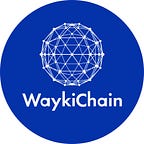WaykiChain Looks into Future | Blockchain Application Scenarios in Banking
In daily life, we often need to make cross-bank deposit&withdraw, which will cause high processing costs for banks. Even if there is organized inter-bank settlement mechanism, but due to its centralized structure, as more and more banks joining, the cost and workload of clearing center will increase significantly, thus reducing the speed of clearing.
It is estimated that global banking industry spends tens of billions of dollars in labor costs on transactions every year.
Moreover, there are potential risks in centralized structure. If the data or hardware facilities are manipulated or destroyed, the clearing center will breakdown, which is a huge blow to the whole industry.
Essentially, bank is a secure repository and exchange center of value. Blockchain as a digital, secure, and anti-manipulated general ledger, can achieve the same function. For this reason, blockchain is the best choice for banking industry in the future.
Blockchain is a point-to-point distributed ledger. Participants on chain can execute transactions through asymmetrically encrypted public or private key, significantly reducing the complexity of settlement and the cost of processing.
Transaction data is recorded by nodes in the form of blocks, each of which is censored by nodes. If all nodes reach a consensus, the valid transaction data contained in a block will be added to blockchain. In addition, it’s completely autonomous to setup and maintain these nodes, thus no controlling or supervising entities are needed or allowed.
Since blockchain clearing and settlement are almost synchronized, and the system runs on point-to-point network, so each transaction can ensure accurate execution, security and transparency, and can be verified by all nodes on the network.
In 2018, China’s five major banks have applied blockchain technology to poverty alleviation, international trade, house renting, e-commerce supply chains and services in Xiong’an New Area.
Blockchain application scenarios in banking:
Blockchain + Remittance
Blockchain remittances include domestic transfers and international cross-border remittances. The goal of traditional bank consortium chain is to unify major banks to achieve real-time point-to-point transfer transactions, saving processing and time costs, and improving user experience and quality of service.
Blockchain + Credit
At present, there are mainly two programme for applying blockchain in credit. One is to combine blockchain technology and commercial algorithm to realize identity verification and credit rating of debtors, and the other is to connect dispersive credit data from various credit organizations and form a consortium chain. The latter is easier to achieve as serving traditional bank credit business is one of the most important application scenarios of credit consortium chain.
In this model, traditional banks ares the main users of credit consortium chain rather than the members. Compared with the traditional credit data provided by the central banks, the data from the credit consortium chain can ensure higher coverage rate and lower processing costs. It is conducive to improving the credit efficiency and reducing the bad debt rate.
Blockchain + Clearing&Settlement
Clearing and settlement are the basic functions of traditional banking industry. Settlement is between bank and users, while clearing is between banks to complete transfer and record of funds among the organizations (banks, third parties).
Traditional clearing and settlement system is dominated by central banks, and the transaction system is separated from the reconciliation system, which leads to low efficiency. But with emerging blockchain technology, the transaction data is generated on chain so the clearing and settlement can be completed synchronously and automatically.
Traditional banks have tried to improve clearing and settlement system by using blockchain in many ways. One is to initiate blockchain clearing project by central banks, such as Khokha project of Central Bank of South Africa, aiming at inter-bank clearing and settlement, applying JPMorgan’s Quorum blockchain technology.
The other is top-down payment clearing system built by commercial banks using blockchain payment technology, such as the blockchain distributed ledger technology provided by Huarui Bank and Ripple. Banks can make clearing and settlement with their agency banks on blockchain, saving telecommunications charges and clearing time.
With the upgrading of blockchain technology and development of bank consortium chain, clearing and settlement on blockchain will gradually become reality, which will reduce the cost for traditional banks and bring blockchain application scenarios to bank customers, for example, cross-bank transaction fees will become history.
Website: https://www.waykichain.com/
Telegram: https://t.me/wiccofficial
Twitter: https://twitter.com/wayki_chain
Facebook: https://www.facebook.com/waykichainofficial/
CMC: https://coinmarketcap.com/currencies/waykichain/
Email: WaykiChain@outlook.com
